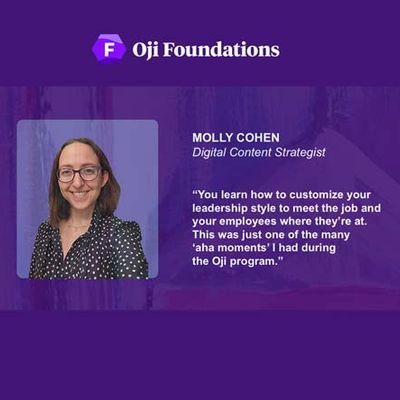Quiet Quitting – Here’s What You Should Focus on Instead

If you’ve been following the growing debate over “quiet quitting,” you might have gotten the sense that this phenomenon — employees consciously pulling back from their work and delivering less — is a new trend brought on by the aftermath of the pandemic. It isn’t. Quiet quitting has existed for decades under many different names, including “disengagement,” being “checked out,” and others.
But regardless of the specific term the media has latched onto to describe this phenomenon today — or whatever clever name they give it tomorrow — managers, leaders, and L&D professionals should be focused right now on answering one question: How can we strengthen relationships and connections with our teams to increase job satisfaction and improve team culture?
The Answer Is Personal Engagement (Emphasis on Person)
Interesting story: The psychologist credited as “the father of employee engagement,” William Kahn, never actually used the term “employee engagement” — and never advocated for what that concept has come to mean today. In his groundbreaking 1990 research paper, Kahn described this important and valuable workplace phenomenon as “personal engagement.”
And as Kahn later explained in a Forbes interview, this subtle shift in terminology led to many organizational leaders missing the fundamental truths he was describing in his research:
“The term I phrased was actually personal engagement, which is what does it mean for a person — a human being — to bring more or less of themselves into their role at work. It was snatched up and then transformed into employee engagement. And the reason I’m fascinated by that is because it shifted the focus on the person to the focus on the employee. It got redefined as how absorbed and attentive and energized someone can be on behalf of the organization.”
Kahn’s original insight — that people tend to feel more positively about themselves and their work when they feel personally connected to it — morphed into the goal of finding ways to make employees more committed to the organizations that employ them.
The challenge with that approach is that human beings are much more likely to feel personally connected to other human beings than to something as abstract and impersonal as an organization.
Insights that give you a competitive edge.
Subscribe NowThe 3 Must-Haves for Workplace Personal Engagement
So, what does personal engagement mean? Kahn describes it this way: “When people are engaged, they experience themselves as the person they most want to be. They say what they think and feel.”
And to achieve this level of engagement, Kahn’s research found, a person’s work and workplace must meet three conditions:
1. Psychological safety
The employee feels safe expressing their feelings, making suggestions or requests, and arguing for what they believe in — without fear of negative consequences.
2. Meaningfulness
The employee’s work provides enough personal meaning and fulfillment that they feel positively about giving it their full attention.
3. Psychological availability
The previous two conditions are satisfied to the degree that the employee can engage their full self in what they’re doing without feeling preoccupied by other professional or personal issues.
With those workplace conditions in mind, let’s return to the question we raised in the introduction:
How can we strengthen relationships and connections with our teams to increase job satisfaction and team culture?
3 Tips to Increase Personal Engagement in Your Organization
One of Kahn’s most valuable insights is that the key to engagement in the workplace is focusing on the person — the whole person, as a human being, and not merely as a functionary in a faceless bureaucracy. And yet think about how most organizations describe their teams today:
- Workers
- Staff
- Roles
- Positions
- Resources (ouch!)
- Headcount (double ouch!)
None of those terms can tell you a single thing about the uniqueness of any of the humans who occupy those jobs. Every term tells you how the person relates to and serves the organization.
1. Show your employees how their work makes a difference.
A Harvard Business Review study found 90% of people would take less pay to do more meaningful work. That’s how important — indeed, necessary — meaningfulness is to personal engagement at work. Kahn was correct.
And yet, few managers today take the time to show the people who report to them exactly how the work they’re doing is creating positive outcomes — for their coworkers, customers, local community, the world, etc.
It doesn’t matter what your organization does, or what industry you’re in. Your products or services affect people’s lives. If you sell software to businesses, keep an eye on your customers’ progress. Let your team know when their organizations expand, because your software — and your team — can feel some responsibility to helping to create jobs.
There’s always a larger positive picture that your employees had a hand in creating. Tell them about it.
Here’s one simple example, to contrast the cold and clinical ways most organizations refer to their employees. Disney calls everyone who works in one of their stores or at one of their theme parks a Cast Member.
It’s a small thing, but think about what that title says to a person who puts on the Disney uniform: You’re not just serving the needs of a big corporation. You’re here to create a great experience for the people — the fans — who come here to enjoy their day.
2. Turn your “department” into a genuine team.
It’s human nature to care about people who have demonstrated that they care about us. It’s difficult to feel personally, emotionally connected to a department or staff. But we can and do connect on a personal level with people and teams.
That’s why it’s so important to build more authentic relationships with the people who work for you — and to encourage them to deepen their relationships with each other. Look for ways to bring together the people who work for you, who might not view each other as anything but coworkers — and help them learn more about each other as people.
There are many strategies for doing this, but one simple best practice is to open meetings and team functions by posing interesting questions designed to elicit unique viewpoints and character traits about your team. (We offer several of these questions in our Employee Engagement Job Aid.)
Employees often love these short sessions. The more we get to know the people on our team or in our organization — as siblings, hobbyists, sci-fi nerds, motorcycle enthusiasts, whatever — the more personally connected we feel to them and to our work.
3. Designate all team interactions “psychologically safe” spaces.
There’s a funny scene in the old TV sitcom NewsRadio. The radio station’s director asks the star on-air host — a heavy smoker — where they should set up the office’s designated smoking area. The host responds: “How about a mobile 10-foot radius around me?”
That’s how you’ll want to think of your team’s psychologically safe spaces. Wherever your employees interact, whatever meetings they hold, whatever thoughts or suggestions they have, they should feel confident that they can speak freely and authentically — without fear of retaliation or other negative consequences.
It All Comes Down to People
Fads such as quiet quitting, and the even newer “quick quitting,” will come and go. The organizations that will thrive through these trends are the ones that don’t get distracted with short-term fixes but instead focus on shoring up the fundamentals. As Kahn explained back in 1990, it all comes down to people.
Latest Posts
BACK TO HOME ❯Sign up for our People-Powered Newsletter.

 Meet our Program Experts
Meet our Program Experts
 Why Oji is Different
Why Oji is Different
 First Impressions of the Oji Foundations Program
First Impressions of the Oji Foundations Program